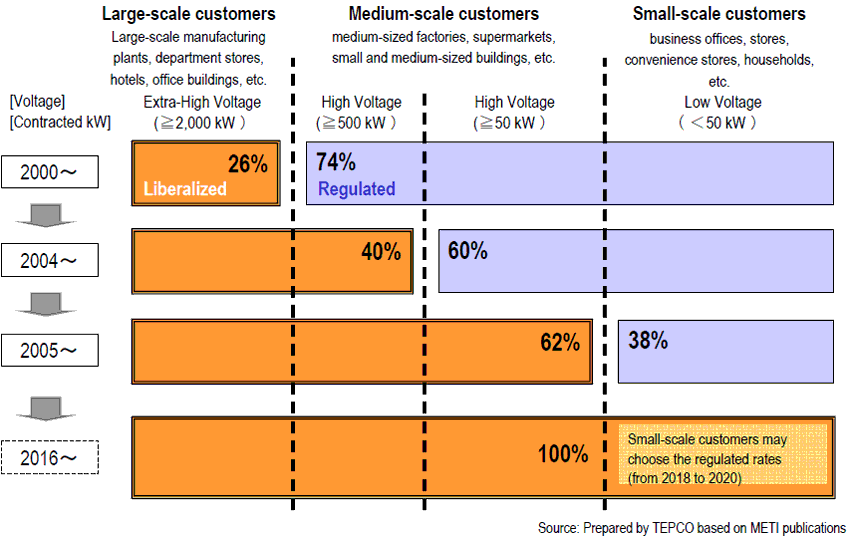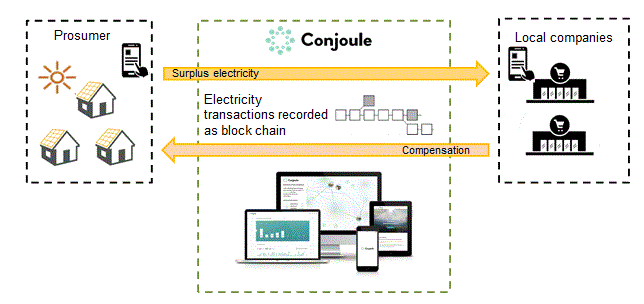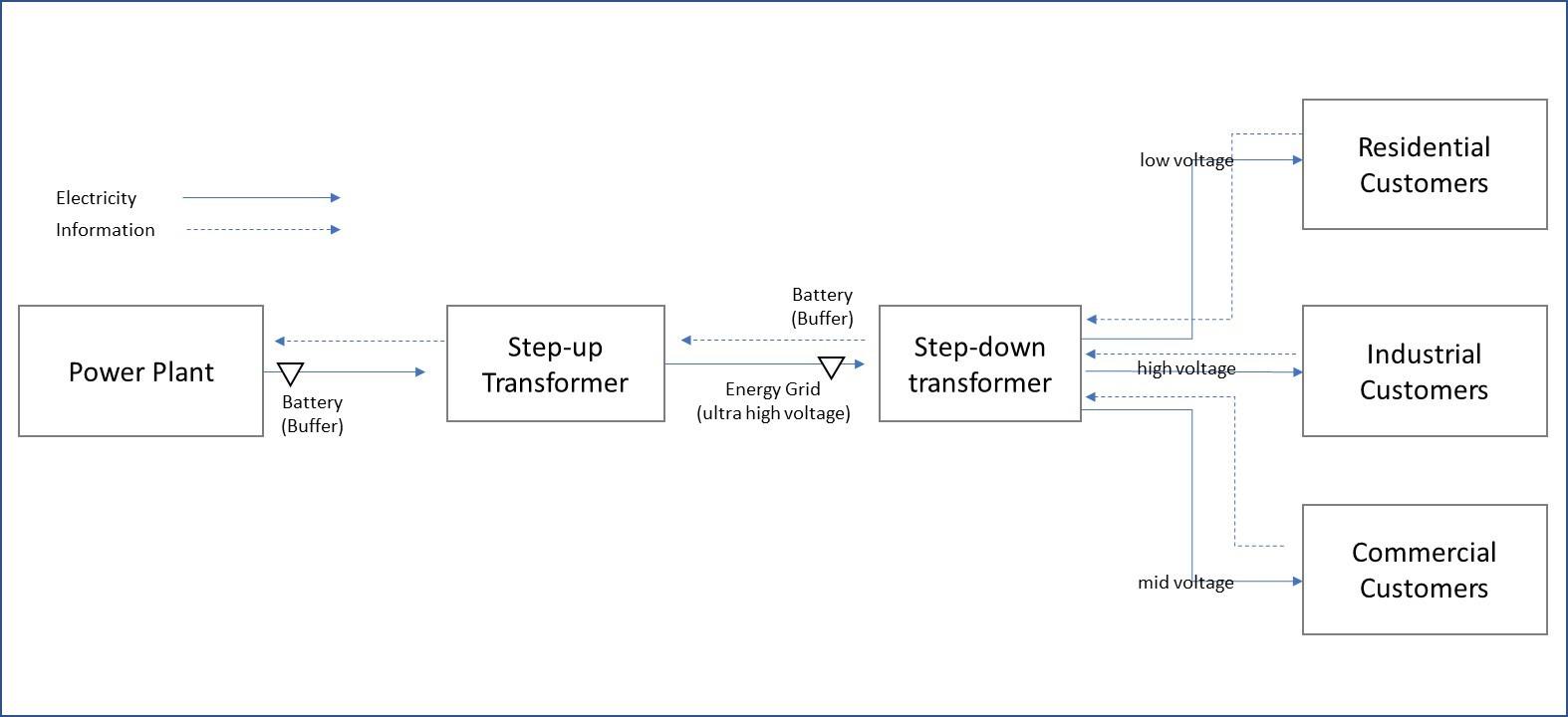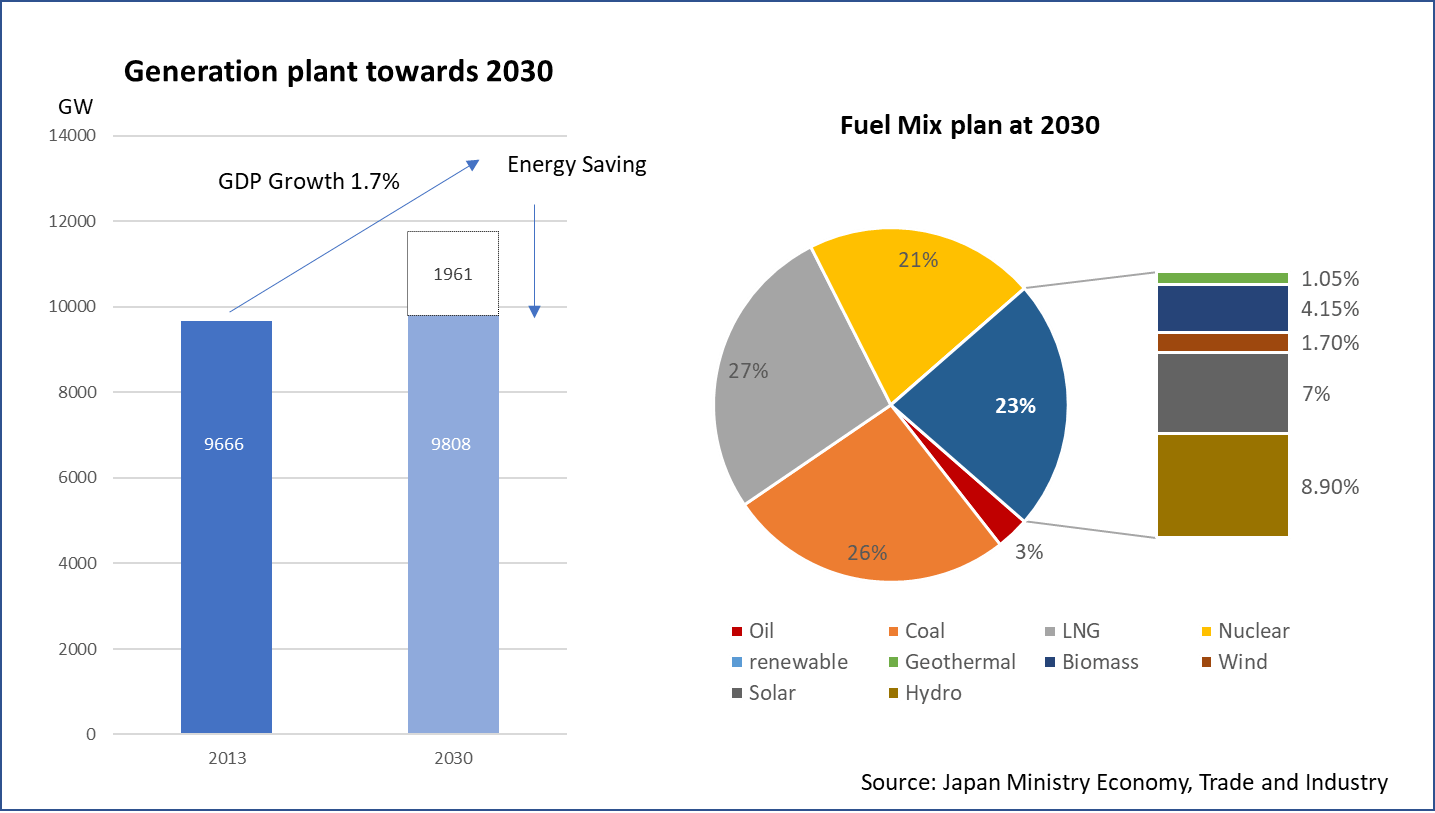TEPCO: A quiet emergence of Smart-Grid in Japan (Digitization)

Japan's leading utility, TEPCO has been quietly installing cutting-edge technologies in its energy grids as the world moves towards the new levels of interconnectedness. This essay looks at the energy grid as a supply chain network, and analyses the impact digitization as a major force of disruption.
Thomas Edison launched world’s first commercial power grid in 1882 at the Pearl Street Station in lower Manhattan, where 100-volt steam generator connected few hundred lamps in the neighbourhood [1]. From here, energy usage spread across the world through the replication of these self-contained grid systems. Who would have thought, more than a century later, we would be looking back at this model.
 Figure 1: Pearl Street Station: source [2]
Figure 1: Pearl Street Station: source [2]
1. Supply Chain Network
Modern electricity supply chain network can be mapped as below: electricity is generated at power plants, distributed via energy grid and delivered to customers with different voltage requirements.
Figure 2: supply chain network
One of the fundamental challenges is that the storage capacity is limited due to technological difficulties, exposing the utilities to large fluctuations in demand, requiring them to be equipped with sufficient supply capacities to accommodate peak-hour demand, while also to withstand severe under-utilization during off-peak hours.
2. Three (Energy) Arrows of Japan
Tokyo Electric Power Company (TEPCO) is Japan’s largest utility, operating 195 power-plants with total generation capacity of 62GW [3]. TEPCO had long been under government protection, however the company is now facing three exogenous impacts that could challenge the company’s business model:
(2.1) Deregulation
Japan has been lagging behind the Europeans with its energy market deregulation, but finally completed the process in April 2016, enabling independent producers to enter the market. Decoupling of distribution will also take place by 2020 [4].
 Figure 3: deregulation time-line: source [5]
Figure 3: deregulation time-line: source [5]
(2.2) Alternate energy storage technologies
Energy storage technology took off in the 1970s with the arrival of rechargeable lithium-ion batteries. While cost and efficiencies of Li-ion had greatly improved since, recent years saw the arrival of viable alternate energy storage systems, with Molten Salt TET and Ice Thermal Storage leading the way with superior performance over Li-ion.

Figure 4: alternate battery technologies: source [6]
(2.3) Digitization
Wide-scaled adoption of internet technologies in every walk of life, has enabled utilities and end-users to interact at a new level of efficiency, collaboration, automation. This ‘smartization’, combined with deregulation and energy-storage improvements, opens the door for Japan to walk into the world of smart-grid.
Figure 5: Smart-Grid supply chain network
(2.4) Implications
The implication of the arrival of smart-grid for TEPCO is severe. The flow of energy will be multi-directional, meaning that utilities will no longer be the sole generator/distributor, but they could also become the receiver of electricity. Moreover, enhanced battery capacity increases the effectiveness of (i) smaller scaled generators and (ii) renewable energy as a viable and stable supply of electricity. Thirdly, national grid will be fragmented into smaller self-contained grids that could at times go ‘off-grid’ and require no interaction with large utilities.
These impacts will likely to result in increased competition for TEPCO, but more fundamentally, it will challenge the role of TEPCO as the dominant supplier/distributor in the supply chain.
3. Reactions
Most remarkably, TEPCO’s reaction to arrival of smart-grid era has been that of embracement. As an example of its short-term initiative, in 2013, TEPCO partnered with Toshiba to install ‘smart-meters’ or advanced metering infrastructure (AMI) that enhances the efficient and automated monitoring of energy flow across the grid. By April 2017, the company had installed 10 million AMIs, surprising the market with its unprecedented pace and scale, suddenly placing TEPCO as one of world’s leading ‘smart’ utilities [7].

Figure 6: advanced metering infrastructure: source [8]
For longer horizon initiatives, TEPCO announced in July 2017 to start a partnership with Conjoule GmbH, to develop block-chain technologies that will enable “peer-to-peer marketplace for producers and consumers of renewable energy, as well as owners of batteries and other sources of flexibility, to transact with each other without the need for traditional intermediaries”[9].

Figure 7: peer-to-peer energy exchange technology: source [9]
These technologies could fundamentally undermine the positions of traditional utility, and this may show TEPCO’s deep understanding of the magnitude of changes ahead, and the acceptance to find a new role in the energy grid.
4. Recommendation
TEPCO’s quiet initiatives towards the adoption of smart-grid is truly remarkable, especially considering the difficulties the company has been facing since Fukushima incident. There is however an equal level of strange quietness when it comes to one subject: the role of renewable energy – an essential player in the era smart-grid. In TEPCO’s defense, the company does not have full autonomy in choosing the fuel-mix portfolio, which is heavily influenced by the government policy.
Figure 8: METI’s fuel mix plan towards 2030 for entire Japan: source [10]
Government plans to push renewable energy to 23%, but fossil fuel energy still constitutes 56%, and nuclear energy is to be restored to 21%. The validity of this energy mix plan is heavily discussed, but all may agree that there are significant uncertainties associated with future usage of fossil fuels and nuclear energy. Should TEPCO show the same foresight and courage in enhancing the role of renewable energy, the company could truly become a major leading force in world’s smart-grid technology.
5. Questions
Can utilities support such start-ups that are exploring radical innovations in power generation? Or do they rely more on in-house R&D?
[word Count 798]
[1] “Edison’s 1882 Pearl Street Station – Alevo”. 2017. Alevo. http://alevo.com/edisons-1882-pearl-street-station/.
[2] ibid
[3] “Electricity Capacity|TEPCO Through Numbers|Tokyo Electric Power Company Holding”. 2017. Tepco.Co.Jp. http://www.tepco.co.jp/corporateinfo/illustrated/electricity-supply/facilities-j.html.
[4] “Relationship Between Energy Deregulation And Decoupling Of Distribution | Enechange”. Enechange. https://enechange.jp/articles/distribution-transmission-separation.
[5] “TEPCO : Corporate Information | Liberalization Of The Electric Power Market”. 2017. Tepco.Co.Jp. http://www.tepco.co.jp/en/corpinfo/ir/kojin/jiyuka-e.html.
[6] “Global Energy Storage Market Outlook, 2017”, Global Energy & Environment Research Team at Frost & Sullivan, accessed in November 2017
[7] “TEPCO To Utilise Full Iot Value Of AMI Infrastructure”. 2017. Metering.Com. https://www.metering.com/news/landisgyr-tepco/.
[8] Marcacci, Silvio, and Silvio Marcacci. 2017. “Global Smart Meter Market Drops 15 Percent In 1Q 2012”. Cleantechnica. https://cleantechnica.com/2012/07/04/global-smart-meter-market-drops-15-percent-in-1q-2012/.
[9] “TEPCO : Conjoule Closes Series A Investment From Innogy Innovation Hub And TEPCO”. 2017. Tepco.Co.Jp. http://www.tepco.co.jp/en/press/corp-com/release/2017/1443967_10469.html.
[10] “Basic Energy Policy For Japan|Energy Policy |Department Of Energy And Resources”. 2017. Enecho.Meti.Go.Jp. http://www.enecho.meti.go.jp/category/others/basic_plan/.






The final question regarding support start ups or relying more on in-house R&D is an interesting one. In particular, in areas with less regulation we have seen several large and traditional companies embrace more of a VC model when it comes to R&D – think Campbell Soup. What a VC model could enable for TESCO is even as Japan’s government may determine fuel mix, TESCO could have the ability to invest in technology that may not be used in their home market but rather abroad. This could help prove effectiveness and then potentially help influence government regulation.
Great article! It helps me understand the concept of smart grid and how digitalization transforms power plant and electricity industry. Adaptation of bitcoin, decentralization, is interesting since the electricity industry has been one of the most conventional and hard-to-change ones. According to the rise of renewable energy sources, TEPCO seems to be well prepared in terms of linking with conventional energy sources and creating a broad platform.
One thing that I would like to add is that TEPCO should also make partnerships with telco companies, such as NTT, KDDI and Softbank. In a smart grid structure, the most important factor to enhance transparency among participants is “Real Time” information. Data should be transmitted fastly and all the participants ought to know the information on a real-time basis. Thus, a significant number of sensors and the fast network infrastructure are critical for a smart grid business.